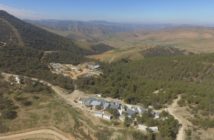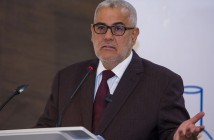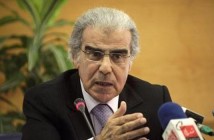Through out the globe, the hospitality sector has been susceptible to the waves of global economic ups and downs. The year 2008 saw a massive shift downwards in consumer demand for traveling and vacationing. However bad the demand was three years ago, the hospitality industry has experienced a solid rebound comparable to pre-recession levels. Overall, the industry experts expect that rebound to continue especially in new and emerging markets.
Given these positive market sentiments, it will serve the Moroccan government well to heed these positive signals and build a more robust long term and sustainable industry model. The idea is to have a good planning model for the future such as the Vision 2020 that has been proposed by the King.
Morocco’s tourism promotion strategy should be built around three main attractions: The diversity of the country’s locations, its culture and authenticity, and sustainability of the different destinations in the country. The tourism ministry should target underdeveloped regions around the country for tourism development. Currently, Casablanca and Marrakech have received the lion’s share of investment, however, the emphasis has to be shifted to other regions.
In addition, Morocco should continue to develop attractions such as the new Morocco Mall in Casablanca to bring new visitors to its shores or to give current ones greater reason to spend money, or to return. In business terms, there should be two pillars to Morocco’s tourism industry: a network of state enterprises, and the participation of foreign capitalist corporations that bring investments and know-how.
Joint ventures with foreign corporations should be encouraged at the highest level, where the foreign partner contributes capital at the beginning of the project, owns up to half the business, participates in management and marketing, and receives distributions of profits. Partners from all over the world should be encouraged to participate in this program.
Joint ventures with foreign corporations should be encouraged at the highest level, where the foreign partner contributes capital at the beginning of the project, owns up to half the business, participates in management and marketing, and receives distributions of profits. Partners from all over the world should be encouraged to participate in this program.
Currently, there are 347 hotels comprising 43,562 rooms in the country’s existing supply, according to STR Global, but an additional 38 hotels comprising 7,108 rooms are in the total active pipeline as of 30 September.
Tourism and hospitality should be valued in Morocco’s economic strategy not only because it earns draws in currency from abroad, but also because it creates a market for diverse goods and services supplied by Morocco’s domestic industry.
In addition, as the hospitality industry develops, it will create demand for high-skill jobs. Not just jobs for making beds and cleaning public areas, but a whole network of additional services such as managers, suppliers, chefs, specialized multilingual guides, domestic air and land transportation and all the service jobs associated with them. Morocco’s hospitality workers should be well educated, disciplined and eager to learn. They need to have the knowledge of the quality of service expected of customers coming from around the world. Furthermore, Information and technological integration are key components to servicing the demanding customer
Morocco’s hospitality growth prospects and the rate of return visits can further be reinforced if Morocco continues to improve the quality, knowledge, and customer service. This will give competitors in the same market a reason to keep an eye on this emerging destination.
In addition, as the hospitality industry develops, it will create demand for high-skill jobs. Not just jobs for making beds and cleaning public areas, but a whole network of additional services such as managers, suppliers, chefs, specialized multilingual guides, domestic air and land transportation and all the service jobs associated with them. Morocco’s hospitality workers should be well educated, disciplined and eager to learn. They need to have the knowledge of the quality of service expected of customers coming from around the world. Furthermore, Information and technological integration are key components to servicing the demanding customer
Morocco’s hospitality growth prospects and the rate of return visits can further be reinforced if Morocco continues to improve the quality, knowledge, and customer service. This will give competitors in the same market a reason to keep an eye on this emerging destination.
So what will Morocco’s future competitive position in the MENA region be in the tourism industry? Well it all depends on the government’s decision to promote the tourism and hospitality industry strongly for the foreseeable future. Its easy access to the European markets is a positive however, the focus should be more towards the emerging economies and also more visibility in North America especially the United States.
Morocco has made a spectacular start from over a decade ago by doubling its international tourist arrivals. Starting from a modest point, it has become one of the world’s fastest growing tourism market, especially in the African hospitality sector. Topping South Africa in 2010 when it comes to tourist arrivals (South Africa had 8 million visitors while Morocco welcomed more than 9.2 million) Morocco is in a strong position to forge ahead of its close competitors.
In order for Morocco to meet its challenges of expanding its hospitality industry, it needs to take advantage of current and future trends of the travel and hospitality industry. The United Nation World Tourism Organization provides the latest data on the industry’s short and long-term trends and also an outlook based on current developments. The Moroccan government should also contemplate macroeconomic forecasts of how the travel industry is likely to appear in the next 10 years and beyond and what factors can cause potential changes in future tastes. This is an opportunity for growth in the Moroccan hospitality industry and to increase its market region share and tourist receipts.
Sources include: UNWTO, Oxford Economics, Smith Travel Research Global, Amadeus.com







